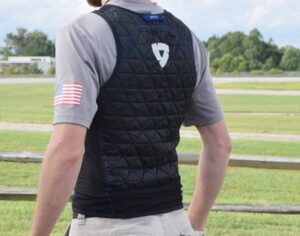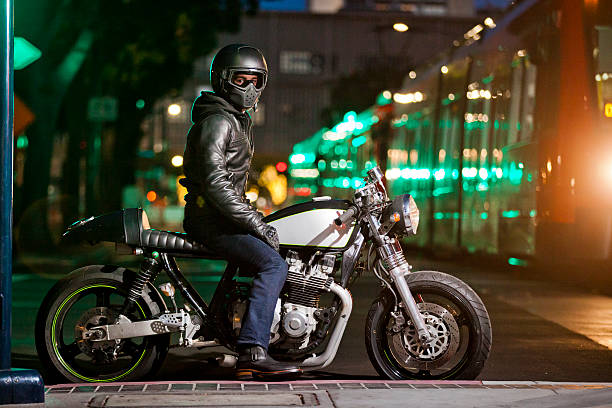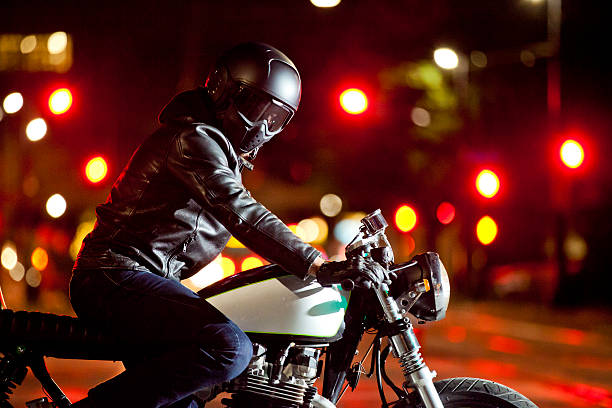How Cooling Vests Change Summer Rides
Summer presents distinct obstacles for motorcyclists. Heat, especially in countries with high and persistent temperatures, can dampen the exhilaration of the open road. Riders have developed clothing and riding techniques to combat the heat for years. The cooling vest for motorcycle riding is a game-changer, turning summer riding into a joy cruise.

Cooling vests make rides more comfortable and reduce overheating on hot days. This is important because high temperatures hinder sweat and evaporation, producing discomfort and heat stroke. Cooling vests help riders focus, enjoy hot weather, and ride longer.
Evaporation, phase change, or battery-powered active cooling vests are available. Evaporative cooling vests that soak in water employ the body’s cooling mechanism. The vest absorbs body heat as water evaporates, lowering body temperature. High humidity reduces cooling because evaporation slows.
However, phase change material vests incorporate chemicals that melt or solidify at a specific temperature. These vests charge in a freezer or cold water and stay cool for hours, regardless of humidity. Their constant cooling without rewetting makes them perfect for prolonged journeys with scarce water supplies.
Battery-powered cooling vests with fans or pads actively lower body temperature. These vests are cutting-edge technology, rechargeable, and have customizable cooling levels. They are beneficial in highly hot settings where passive cooling may not work.
Riding with a cooling vest has many benefits. First and foremost, they improve rider comfort, allowing longer rides without heat fatigue and distraction. Enjoyment and safety are at stake. Heat stress reduces cognition and reaction time, increasing accident risk. Summer rides are safer when cyclists stay excellent to improve concentration and reflexes.
Furthermore, cooling vests can reduce heat-related illnesses. Cooling vests mitigate these hazards by lowering core temperature and sweat production and keeping riders hydrated and healthy.
A rider can reduce their use of bulky, air-restricting jackets by adding a cooling vest. Safety gear is essential, but many abrasion-resistant coats lack breathability for hot weather riding. Combining comfort and protection, cooling vests let motorcyclists have it all.
When buying a cooling vest, consider these aspects. The riding temperature, ride duration, and maintenance and preparation preferences determine the decision between evaporative, phase change, and battery-powered vests. Fit is also essential for the cooling vest’s effectiveness. Too loose, and the vest won’t cool the body; too tight may impede movement or become uncomfortable.
Motorcycle riders use cooling vests because of their effectiveness and innovation in motorcycle gear. As technology develops, these vests become more efficient, comfortable, and accessible to cyclists of all levels. Cooling vests have transformed summer motorcycling in deserts, humid coastlines, and urban heat islands.
Despite lacking general exposure, the cooling vest will become vital for summer riders. Beyond individual comfort, it suggests a future where technology and tradition mix on the open road, making motorcycle riding a year-round delight unrestrained by weather. Cooling vests represent innovation, safety, and the motorcycle community’s tenacity as riders push the limits.

Top Motorcycle Cooling Vests: Which Works Best?
Motorcyclists seek comfort during summer trips by exploring heat-resistant gear. The cooling vest is famous for reducing body warmth and improving the riding experience. However, finding the right one can be an effort with so many cooling vests on the market takes time and effort. This study examines cooling vest technologies and their practical applications for summer cyclists.
Motorcyclist cooling vests use several mechanisms to remove heat from the body. The leading technologies are evaporative, PCM, and electronic cooling systems. Each variety has pros and cons depending on temperature, humidity, and riding duration.
Evaporative cooling vests are popular for hot, dry situations. To activate these vests, soak them in water and wear them over a light shirt. Water evaporates, absorbing body heat and cooling. Evaporation, which is affected by humidity, is crucial to these vests’ efficiency. Since saturated air hinders evaporation, evaporative cooling vests are less efficient in humid climates.
However, phase change vests use materials that absorb or release heat when solidifying or liquidifying. After freezing or refrigerating, these vests keep you cold for hours. PCM vests are excellent for many regions since they are not affected by external humidity like evaporative vests. They may not be suitable for long-distance rides because their cooling time is limited and requires pre-recharging.
Electronic cooling vests with battery-powered fans or pads are the latest in cooling technology. These vests have changeable cooling levels and can lower temperatures regardless of the weather. They offer improved cooling, but their higher price, battery recharging, and weight may deter some riders.
Choosing between these cooling vests depends on riding conditions and heat tolerance, not desire. Evaporative cooling vests may be efficient and cost-effective for Southwest cyclists. PCM or electronic cooling vests may be preferred for consistent performance in humid Southeast air.
Another essential element in choosing a cooling vest is fit and comfort. A too-tight vest may impede movement and be uncomfortable on lengthy rides, while a too-loose vest may not allow heat exchange. Consider the vest’s compatibility with other riding gear, such as coats and backpacks, to avoid hindering safety equipment or rider weariness.
Beyond cooling technologies, the vest must be durable and maintained. Gear that is readily destroyed or requires frequent maintenance may not be suitable for motorcyclists in harsh conditions. For example, evaporative vests need water, so cyclists must plan their trips accordingly. While less maintenance-intensive, PCM vests must be frozen beforehand, possibly only for multi-day travels with a freezer. The batteries and mechanical parts of electronic vests need regular charging and careful handling to avoid harm.

Personal reviews and field experiments help choose the best motorcyclist cooling vests. Forums and rider product evaluations show how vest types function in different conditions. Firsthand accounts can show how each vest type performs over time, such as the convenience of recharging PCM vests on the road or carrying extra batteries for electronic vests.
As cooling vest technology advances, motorcyclists have more effective heat management options. These vests’ cooling, wearability, and convenience will improve with material and design innovations, making summer rides safer and more pleasurable. Cooling vests may be integrated with jackets and helmets as research enhances rider comfort and heat management.
The ideal cooling vest for motorcycle riding depends on temperature, journey length, budget, and personal preferences. Evaporative vests, with their simplicity and inexpensive cost; PCM vests, which provide continuous cooling; and electronic vests, with their advanced technology, can improve riders’ summer riding experience.






Leave a Reply